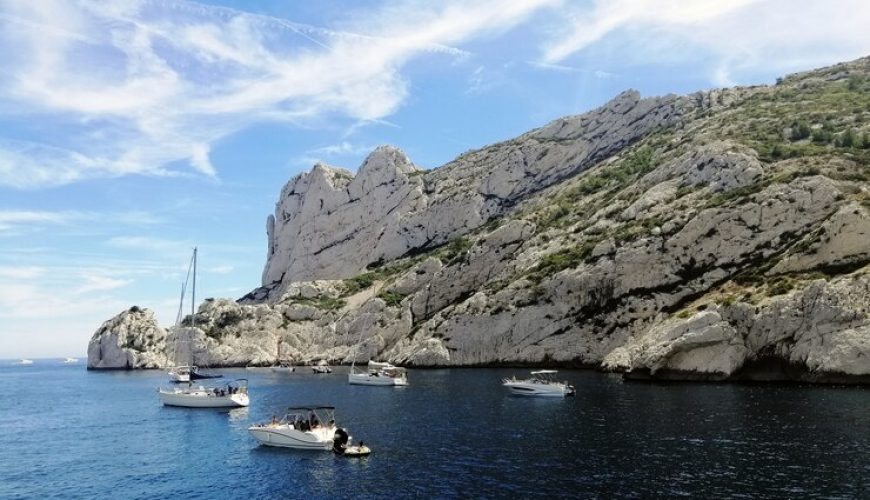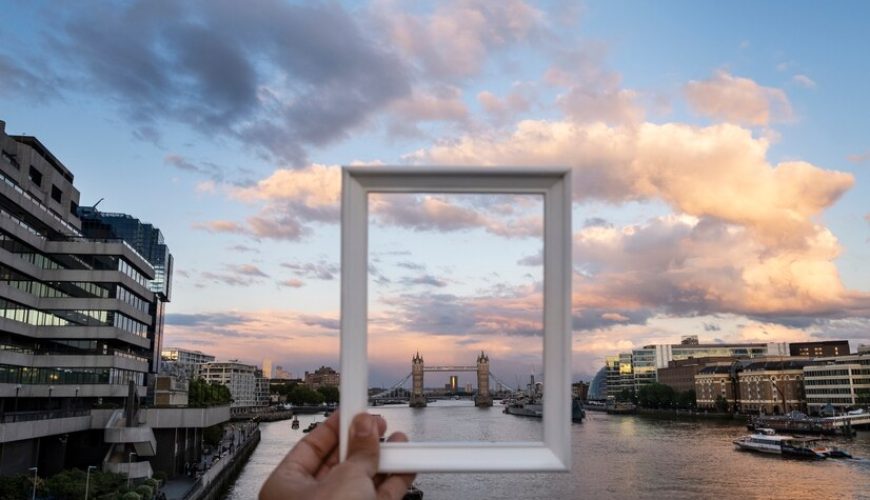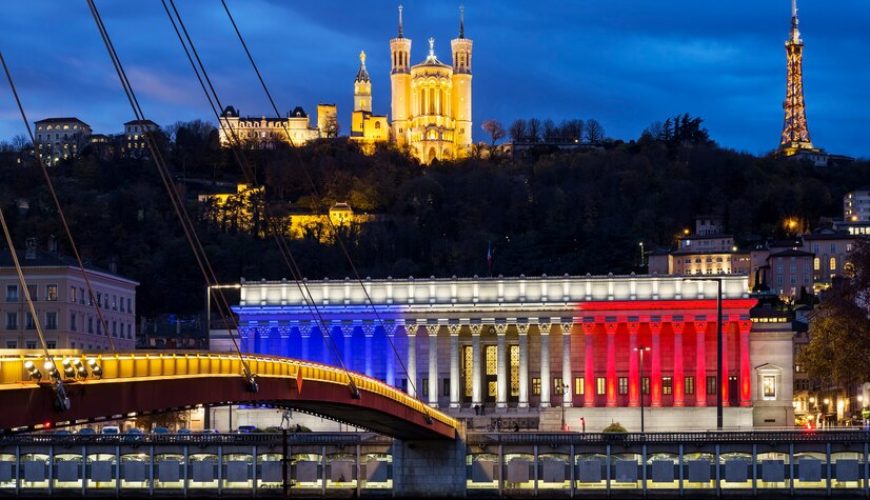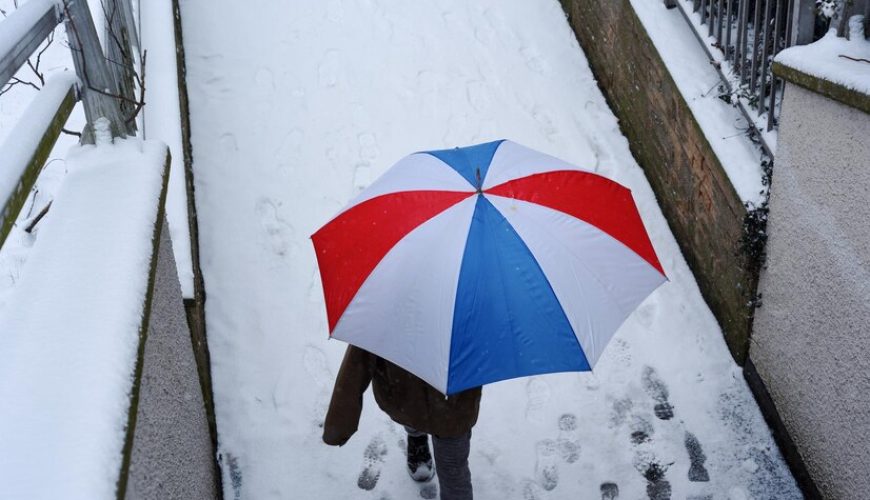10 Must-Do Things in Nice
Family travel
10 Interesting Facts About Marseille
Marseille is a city that offers a perfect mix of history, culture, and natural beauty, making it a must-visit destination for travelers of all kinds.
12 Must-See Attractions in Lyon for First-Time Visitors
Lyon has incredible sights showcasing its rich history, culture, and vibrant spirit. Whether you’re a history buff, foodie, or simply a curious traveler, these 12 attractions are unmissable: 1. Fourvière Basilica (Basilique Notre-Dame de Fourvière) This stunning basilica on Fourvière Hill offers breathtaking city views and an ornate interior with gilded mosaics. The terrace outside is a perfect spot for panoramic photos. 2. Vieux Lyon (Old Lyon) A UNESCO World Heritage Site, this Renaissance district is a maze of cobblestone streets, charming squares, and pastel-colored buildings. Discover the famous traboules, hidden passageways that once connected courtyards and streets. 3. Parc de la Tête d’Or This is one of the largest urban parks in Europe. This green oasis has a beautiful lake. It also features botanical gardens. There is even a free zoo. It’s an ideal spot for a relaxing afternoon. 4. Musée des Confluences This ultramodern museum at the confluence of the Rhône and Saône rivers explores the intersections of science, anthropology, and culture. Its bold architecture alone is worth a visit. 5. Croix-Rousse District Known as the “Hill That Works,” Croix-Rousse is a vibrant neighborhood famous for its silk-weaving history, colorful murals, bohemian vibe, and steep streets offering great city views. 6. Place Bellecour One of Europe’s largest squares, Place Bellecour is the beating heart of Lyon. It’s a great starting point for exploring the city and offers striking views of Fourvière Hill. 7. Lyon’s Roman Theaters Explore the ancient Grand Théâtre and Odéon on Fourvière Hill. These well-preserved Roman ruins are still used for cultural events, such as the famous Nuits de Fourvière festival. 8. Saint-Jean Cathedral This Gothic and Romanesque masterpiece in Vieux Lyon is home to an impressive 14th-century astronomical clock and stunning stained-glass windows. 9. Les Halles de Lyon Paul Bocuse Named after the legendary chef, this food market is a paradise for food lovers. Sample local specialties like quenelles, sausages, and Lyon’s famous praline pastries. 10. Fresque des Lyonnais This massive mural showcases 30 famous figures from Lyon’s history, including the Lumière brothers and Paul Bocuse. It’s an iconic piece of public art you can’t miss. 11. La Confluence District A strikingly modern area of Lyon, La Confluence features innovative architecture, trendy shops, and riverside dining. It’s a perfect example of the city’s contemporary side. 12. Saône and Rhône Riverbanks The beautifully landscaped riverbanks are ideal for a leisurely stroll or bike ride. Enjoy scenic views, lively cafes, and the magical sight of illuminated bridges at night. Bonus Tip If you’re visiting in December, don’t miss the Fête des Lumières (Festival of Lights), when Lyon transforms into a dazzling wonderland with light displays across the city. With this list, you’ll experience the very best of Lyon and create unforgettable memories on your first visit!
10 Fascinating Facts About Lyon
These unique facts highlight Lyon’s rich history, culture, and charm, making it a must-visit destination for travelers!
Top 10 Most Beautiful Sites in Lyon
1. Fourvière Basilica (Basilique Notre-Dame de Fourvière) Perched atop Fourvière Hill, this iconic white basilica dominates the Lyon skyline. Its intricate architecture combines Romanesque and Byzantine styles, while the interior dazzles with gilded mosaics and stained-glass windows. Climb to the terrace for breathtaking panoramic views of the city below. 2. Vieux Lyon (Old Lyon) Step back in time in this enchanting Renaissance district, a UNESCO World Heritage Site. Wander through cobblestone streets lined with pastel-colored buildings, charming squares, and historic landmarks like the Saint-Jean Cathedral. Don’t miss the traboules, secret passageways that link courtyards and streets. 3. Parc de la Tête d’Or This expansive urban park is one of the largest in Europe and offers a peaceful escape from the city. Stroll through botanical gardens, visit the free zoo, or rent a boat to glide across the serene lake. In the spring, the rose garden blooms into a kaleidoscope of colors. 4. Croix-Rousse District Known as Lyon’s bohemian neighborhood, Croix-Rousse is perched on a hill and offers sweeping views of the city. It’s famous for its silk-weaving history, colorful murals like the Mur des Canuts, and vibrant street markets. The steep streets and artistic vibe make it a must-visit for photographers. 5. Place Bellecour One of Europe’s largest open squares, Place Bellecour is the beating heart of Lyon. The square features a striking statue of Louis XIV on horseback and offers postcard-worthy views of Fourvière Basilica. It’s a lively hub for events, markets, and starting your exploration of the Presqu’île district. 6. Musée des Confluences This futuristic museum is an architectural marvel, situated at the confluence of the Rhône and Saône rivers. Its bold design of glass and steel houses fascinating exhibitions that explore the intersections of science, anthropology, and culture. The riverside location is equally stunning. 7. Lyon’s Roman Theaters Located on Fourvière Hill, the Grand Théâtre and Odéon date back to Lyon’s Roman origins. These ancient amphitheaters are remarkably well-preserved and still host performances and festivals, such as the famous Nuits de Fourvière. 8. Saint-Jean Cathedral This Gothic masterpiece in Vieux Lyon is one of the city’s most impressive religious sites. Its intricate facade, stunning stained-glass windows, and the 14th-century astronomical clock inside make it a must-see for architecture and history lovers. 9. La Confluence District A striking contrast to Lyon’s historic districts, La Confluence is a modern urban area known for avant-garde architecture, stylish boutiques, and waterfront dining. The futuristic design of the buildings and the scenic riverside views create a unique and beautiful atmosphere. 10. Saône and Rhône Riverbanks The riverbanks in Lyon are perfect for a leisurely stroll or bike ride. Lined with greenery, public art, and scenic views of the city, these promenades offer a peaceful retreat. The illuminated bridges at night create a romantic and magical ambiance. From historic sites and architectural wonders to natural escapes and artistic treasures, Lyon offers beauty in every corner. Make sure to visit these breathtaking spots to truly appreciate the charm and elegance of this remarkable city!
Why Visit Lyon?
Nestled between the Rhône and Saône Rivers in southeastern France, Lyon is a city where history, gastronomy, and culture converge. Known as the “Gastronomic Capital of France” and a UNESCO World Heritage Site, Lyon offers a perfect blend of ancient charm and vibrant modernity. Whether you’re a history enthusiast, a foodie, or simply looking for a picturesque destination with a relaxed pace, Lyon has something extraordinary to offer. Here’s why Lyon deserves a spot on your travel list: Rich History & Heritage Lyon’s history spans over 2,000 years, dating back to its founding by the Romans in 43 BC as Lugdunum, the capital of Gaul. Today, Lyon boasts some of the best-preserved historical sites in Europe, such as Vieux Lyon, one of the largest Renaissance neighborhoods in Europe filled with colorful facades, cobblestone streets, and hidden passageways called traboules. On Fourvière Hill, the birthplace of Lyon, you’ll find the stunning Basilica of Notre-Dame de Fourvière and ancient Roman theaters still used for performances. In the Presqu’île, the city’s vibrant heart, you can explore grand 19th-century architecture, bustling squares like Place Bellecour, and elegant shops. Gastronomic Capital of France Lyon is world-famous for its culinary scene and is considered the birthplace of French gastronomy. Traditional bouchons serve hearty dishes like quenelles, saucisson brioché, and salade lyonnaise. The gourmet market Les Halles de Lyon Paul Bocuse offers the finest cheeses, pastries, and wines. Surrounded by the Rhône Valley and Beaujolais wine regions, Lyon is also an excellent place for wine tasting. For those seeking luxury, Lyon’s Michelin-starred restaurants elevate the culinary experience to an art form. UNESCO World Heritage Site Lyon’s beautifully preserved historical districts have earned it UNESCO recognition. From the Roman ruins on Fourvière Hill to the Renaissance architecture of Vieux Lyon and the elegant boulevards of the Presqu’île, the city is a living museum where every street tells a story. Vibrant Cultural Scene Lyon is a hub for arts and culture, offering diverse experiences such as the Fête des Lumières, a December festival where light installations illuminate the city’s landmarks. Museums like the Musée des Beaux-Arts and the Musée des Confluences explore fine art and the intersection of science and human history. The Opéra Nouvel and Célestins Theatre host world-class performances, ranging from opera to contemporary theater. Perfectly Located Lyon’s location makes it an ideal base for exploring France and beyond. It’s close to the Beaujolais and Rhône Valley wine regions and just a short drive from the French Alps for winter sports or alpine scenery. Lyon-Saint Exupéry Airport and the high-speed TGV train network make Lyon easily accessible from major cities like Paris, Marseille, and Geneva. A City of Innovation and Modernity While Lyon is steeped in history, it’s also a modern and forward-thinking city. The La Confluence District showcases cutting-edge architecture and eco-friendly urban planning. Lyon is also a hub for innovation and technology, blending tradition with progress. Stunning Parks and Outdoor Spaces Lyon offers plenty of green spaces to relax and unwind. The Parc de la Tête d’Or is one of Europe’s largest urban parks, featuring a zoo, botanical gardens, and a serene lake. The Riverside Walks along the Rhône and Saône are perfect for strolling or biking, with scenic views and lively cafes. Warm and Welcoming Atmosphere Lyon has a laid-back and welcoming vibe compared to larger cities like Paris. Locals are friendly, and the city’s manageable size makes it easy to explore and enjoy without feeling rushed. Festivals and Events Lyon’s calendar is filled with exciting festivals, including the Biennale de la Danse, the Biennale d’Art Contemporain, and Nuits Sonores, an electronic music festival attracting international artists. A Photographer’s Dream From the colorful facades of Vieux Lyon and the illuminated skyline at night to the charming traboules and the sweeping views from Fourvière Hill, Lyon is a city full of picture-perfect scenes. Why Wait? Lyon combines the charm of an old-world city with the vibrancy of modern life. Whether you’re drawn to its rich history, renowned cuisine, or cultural experiences, Lyon is a destination that promises unforgettable memories. Book your tour to Lyon today and discover why it’s one of France’s most enchanting cities!
Why Paris?
Paris, often referred to as the City of Light, is a dream destination for travelers from around the world. It’s a city that effortlessly blends timeless elegance with modern energy. Whether you’re admiring the art in world-renowned museums, strolling along the Seine River, or savoring a delicious meal in a charming café, Paris is a city that captivates the senses. Here are a few reasons why Paris should be at the top of your travel list:
How to Visit France on a Budget
Visiting France doesn’t have to break the bank. With careful planning and some budget-friendly strategies, you can enjoy this beautiful country without overspending. Here’s how to make the most of your trip to France on a budget: 1. Travel in the Off-Season Traveling during the off-season (late fall, winter, or early spring) can save you a significant amount on flights and accommodation. Summer is peak tourist season, so prices for hotels, tours, and flights tend to be much higher. By visiting in the shoulder seasons (April to June or September to October), you’ll enjoy pleasant weather without the crowds and high prices. 2. Use Budget Airlines and Trains If you’re flying to France, look for budget airlines like Ryanair or easyJet for cheaper flights within Europe. Once in France, the train system is an efficient and affordable way to get around. Consider purchasing a France Rail Pass for unlimited travel over several days. You can also use flights within Europe, especially for traveling long distances to regions like Bordeaux or Nice, where budget flights often offer lower prices than high-speed trains. 3. Book Accommodation in Advance Accommodation in France can be expensive, especially in major cities like Paris. To save money, consider staying in more affordable areas or look for hostels, budget hotels, or Airbnb rentals. If you’re in Paris, staying outside the city center, in neighborhoods like Montmartre or Le Marais, will usually be cheaper but still close to major attractions. Also, look for guesthouses, chambres d’hôtes, or camping sites for more affordable options. 4. Cook Your Own Meals Eating out in France, especially in touristy areas, can quickly add up. To save money on meals, head to local markets or supermarkets like Carrefour or Monoprix, where you can buy fresh produce, cheese, and baguettes to make your own meals. Many supermarkets offer prepared meals that are affordable and delicious. Alternatively, opt for street food or casual bistros away from the major tourist spots for a more affordable dining experience. 5. Explore Free Attractions There’s so much to see in France that doesn’t require an entrance fee. In Paris, visit iconic landmarks like the Eiffel Tower’s Champ de Mars Park, Notre-Dame Cathedral (free entry), Montmartre, or the Luxembourg Gardens. Many cities in France also have free museums on certain days, like the Musée d’Art Moderne or the Petit Palais in Paris. Check local listings for free walking tours, which are a great way to explore the cities with a knowledgeable guide. 6. Take Advantage of Student or Youth Discounts If you’re a student or young traveler, make sure to take advantage of discounts available throughout the country. Many museums, galleries, and attractions offer discounts for students or young travelers (under 26). Also, look for student passes or youth cards that provide discounts on attractions, transportation, and accommodation. 7. Use Public Transportation Instead of relying on taxis or private transportation, use public transportation to get around. The Paris Métro, buses, and trams are affordable and convenient for getting around major cities. In larger cities, you can also consider bike-sharing programs like Velib’ in Paris or BlablaCar, a carpooling app that lets you travel cheaply with locals. 8. Shop Smart When it comes to shopping for souvenirs, avoid purchasing from shops in high-traffic tourist areas. Instead, head to local markets and flea markets for more authentic and reasonably priced items. The Marché aux Puces in Paris or local artisan markets throughout France are great for picking up unique items at lower prices. 9. Take Advantage of Free Events and Festivals France is known for its rich cultural events and festivals, many of which are free. Fête de la Musique in June, Bastille Day celebrations on July 14, and various free art exhibitions or outdoor cinema screenings are just some of the activities that you can enjoy for free. Keep an eye out for local festivals, concerts, and public events happening during your visit. 10. Pack Light Avoid paying extra baggage fees by packing light and using just a carry-on bag. This will save you money on both flights and transportation, especially if you’re taking budget airlines or trains that charge extra for checked luggage. Conclusion Visiting France on a budget is entirely possible with a bit of planning and flexibility. By choosing the right time to travel, using public transportation, staying in budget accommodations, and taking advantage of free attractions, you can enjoy a wonderful trip to France without breaking the bank.
Best Time to Visit France
The best time to visit France largely depends on your interests and the type of experience you’re seeking. Here’s a breakdown of the seasons and what you can expect: Spring (April to June) Spring is one of the most popular times to visit France. The weather is mild and pleasant, with blooming flowers and vibrant landscapes, particularly in regions like Provence. It’s a wonderful time for exploring Paris, as the parks and gardens (like the Jardin des Tuileries and Jardin du Luxembourg) come alive. This season also offers fewer tourists, making it ideal for sightseeing without the heavy crowds of summer. Summer (July to August) Summer is the peak tourist season in France, with long sunny days and lively events. Cities like Paris, Cannes, and Nice are bustling with visitors, making it a great time for cultural events like the Cannes Film Festival or Bastille Day celebrations. The French Riviera attracts sun-seekers, while the countryside comes alive with festivals and outdoor activities. However, be prepared for higher prices and crowded attractions, especially in major cities and coastal areas. Fall (September to October) Fall is another excellent time to visit France, with pleasant weather and fewer crowds than summer. The vineyards of Bordeaux and Burgundy are particularly picturesque during the harvest season. The weather remains mild, and the autumn colors in the countryside provide a stunning backdrop for scenic drives. This is a great time for those seeking a balance between good weather, fewer tourists, and lower prices compared to peak season. Winter (December to February) For those interested in winter sports, the French Alps are a top destination for skiing and snowboarding. Resorts like Chamonix, Val d’Isère, and Courchevel offer world-class skiing during the winter months. Additionally, winter in Paris can be magical, especially with Christmas markets, festive decorations, and ice skating rinks. However, outside of the Alps and major cities, some rural areas may be quieter during this season, as many tourists flock to ski destinations. Conclusion The best time to visit France depends on your preferences. For pleasant weather and fewer crowds, visit during spring or fall. If you’re looking for a lively atmosphere and don’t mind crowds, summer is the season to go. Winter offers the opportunity for skiing in the Alps or enjoying a more peaceful winter experience in cities like Paris.










